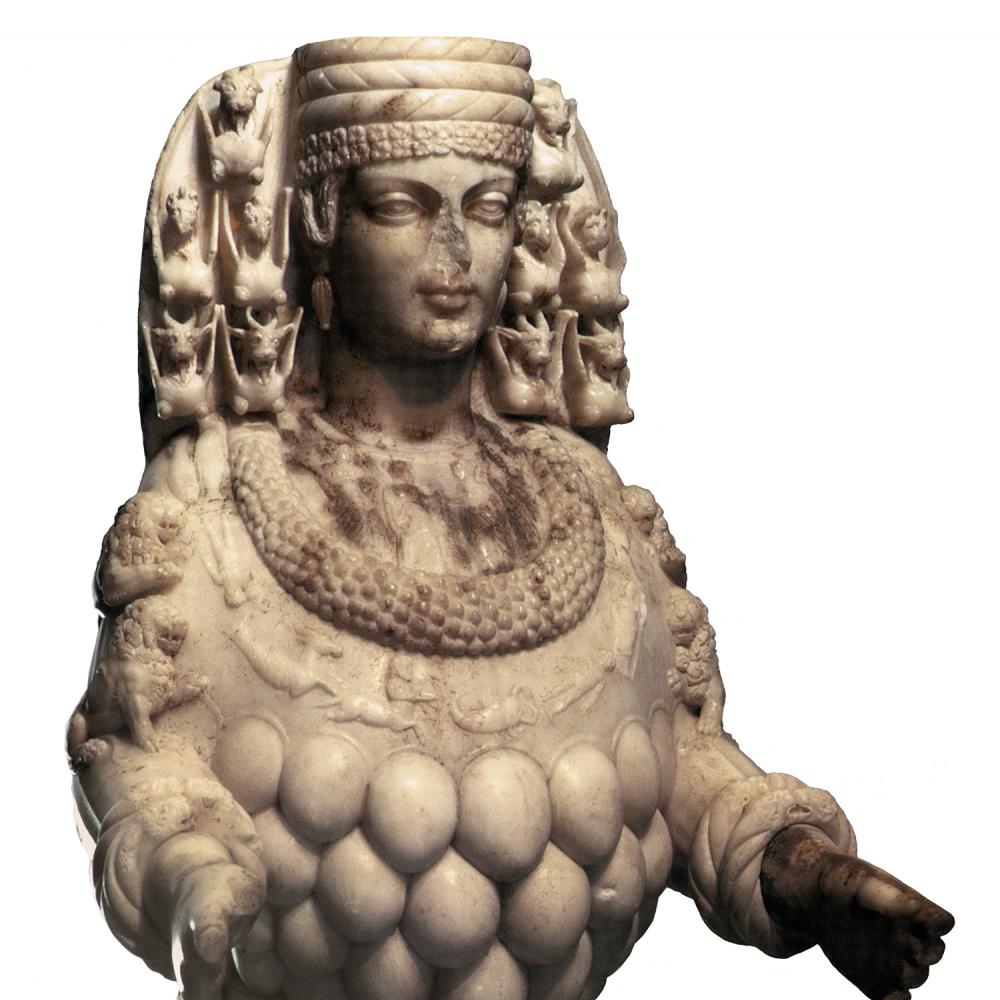For centuries, worshippers of Artemis flocked to the ancient city of Ephesos in present-day Turkey for an annual nativity rite. Young men known as Kouretes hiked to the summit of Mount Solmissos, beating their spears on their shields, diverting the attention of the Greek goddess Hera from the travails of her daughter Leto as she gave birth to Artemis and Apollo. The Kouretes were initiates to whom the mysteries of Artemis were revealed. After the ceremony, there were feasts with drinking and dancing.
In the NEH-funded The Mysteries of Artemis of Ephesos, Guy Maclean Rogers brings to light what years of meticulous study of the epigraphic and archaeological evidence have shown—that the rites had a reciprocal aspect and that there was much civic involvement in the annual celebrations, spawned in part by the commercial success of the whole production.
“The preponderance of evidence,” writes Rogers, “shows that most people in the ancient world made vows to gods to achieve specific, well-defined, short-term goals, such as avoiding illness, ensuring a bountiful harvest, completing a voyage safely, getting rich, or attracting a desirable lover. If the goal was realized, the person who made the vow dedicated a statue or an inscription . . . to the god(s) to pay off the vow.” Rogers refers to this process as “do ut des,” or “I give so that you might give,” creating with the gods, he writes, “a reciprocal relationship of trust . . . that might lead to their favor.”
But by the reign of Augustus, “the temple [of Artemis],” writes Rogers, “was stripped of its political role in the life of the city,” and the Kouretes were removed to another location. Even so, that was not the end of Artemis worship, which, leaders of the polis realized, could be a valuable tourist attraction.
“By the end of the reign of Tiberius,” Rogers observes, the public officials of Ephesos “had figured out that if Athens and other poleis could draw attention to themselves and make money from the performance of their special, local mysteries, it too could enrich itself by revealing Artemis’s secrets to more initiates.”
From the late fourth century BCE to the middle of the third century of the current era, Ephesos enjoyed a good run, until, Rogers says, finally, “the Kouretes quit the big show on top of Mount Solmissos. After nearly six centuries, the curtain fell for the last time on the mysteries and sacrifices. The stars of the show exited the stage, not to applause, but to silence, and the goddess herself learned the very hard human lesson that in the end, the strong truly are at the mercy of the weak.”


